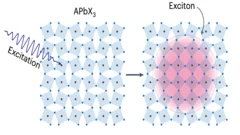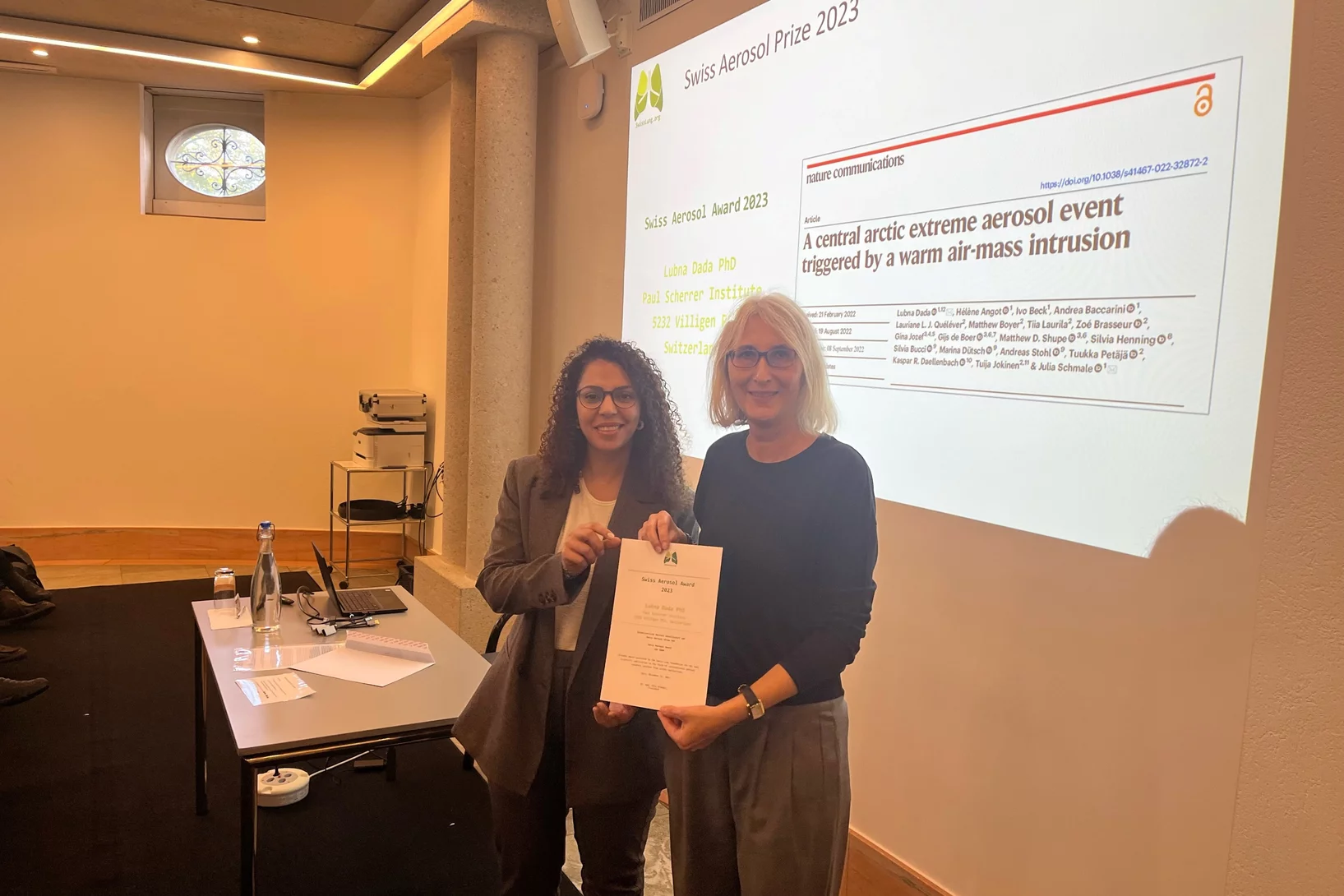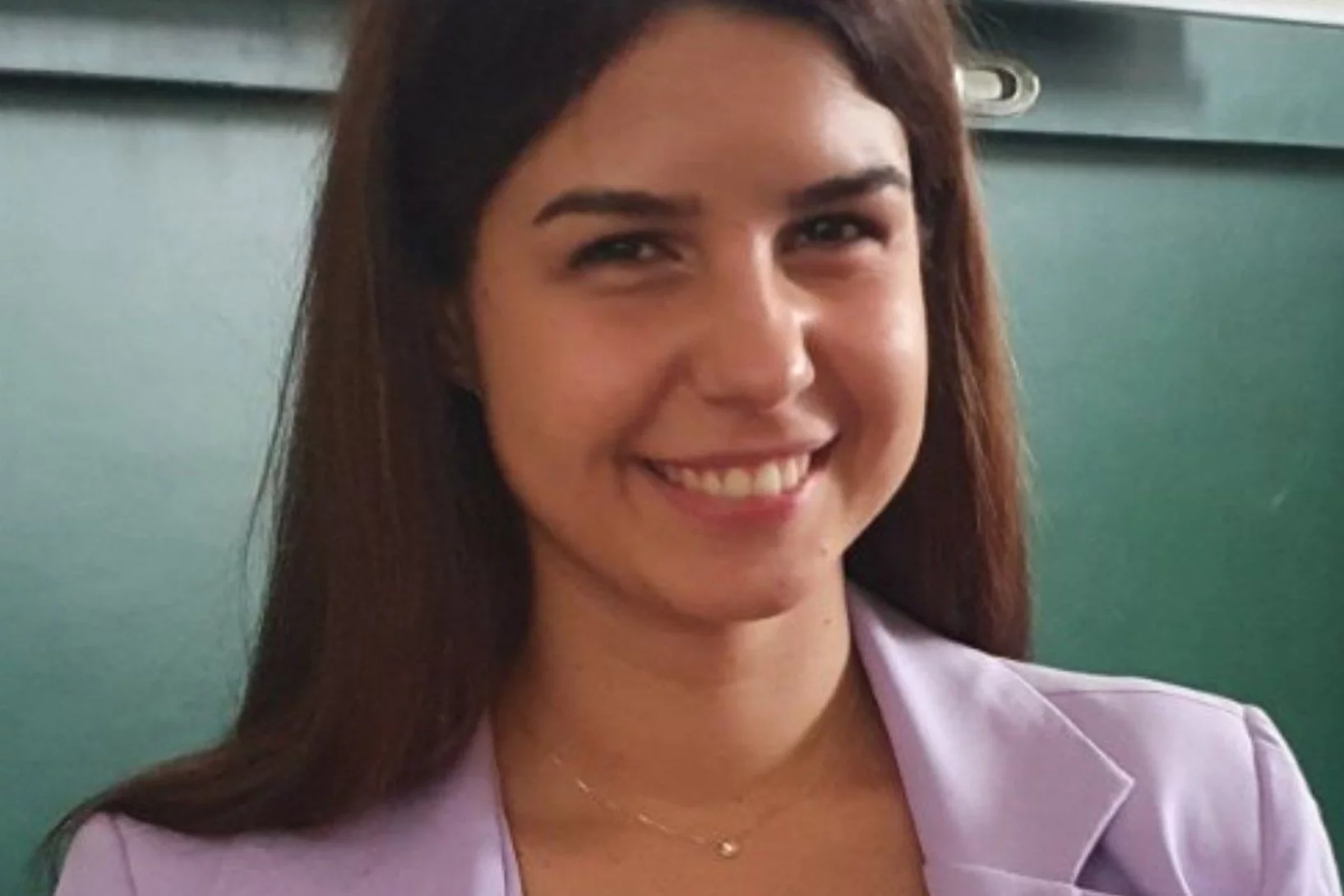Am Paul Scherrer Institut suchen Forschende nach Antworten auf die fundamentale Frage nach den Grundstrukturen der Materie und den fundamentalen Funktionsprinzipien in der Natur. Sie untersuchen Aufbau und Eigenschaften der Elementarteilchen – der kleinsten Bausteine der Materie – oder gehen der Frage nach, wie biologische Moleküle aufgebaut sind und wie sie ihre Funktion erfüllen. Das so gewonnene Wissen öffnet neue Lösungsansätze in Wissenschaft, Medizin oder Technologie.
Mehr dazu unter Überblick Grundlagen der Natur
Microstructural control of additively manufactured Ti-6Al-4V
In-situ Selective Laser Heat treatment is applied to induce martensite decomposition in Ti-6Al-4V
Terbium-161: new radionuclide therapy hits the clinic
Highly targeted cancer treatment has the potential to eliminate ultra-small cancer lesions that cause disease recurrence.
Intelligentes Glas und Musik aus der SLS
Jährlich fördert das PSI-Founder-Fellowship-Programm neue Ideen für innovative Anwendungen mit bis zu 150 000 Schweizer Franken.
New post-doc position on high-throughput discovery in the MSD group
A new post-doc opportunity is open to join the MSD group to set up and maintain large scale materials discovery projects based on the workflow engine AiiDA.
These positions are funded by NCCR MARVEL, offering close collaboration opportunities with project partners such as the Swiss Supercomputer Center CSCS, and other institutions in Switzerland and Europe.
Deadline: December 10, 2023
Excitons coupling to octahedral tilts in Pb nano-perovskites
Excitons coupling to octahedral tilts in Pb nano-perovskites
Crystal field rules heavy fermion delocalization in SmCoIn5
Crystal field rules heavy fermion delocalization
"Core-shell" cathodes for high performance Li-ion batteries
“Li-rich Ni-rich” core-shell particles are engineered as layered cathode materials for high energy Li-Ion batteries, including a controllable outer "Li-rich Mn-rich" shell improving cyclability.
Wie wichtig ist Wasserstoff für die Energiewende?
Einordnungen von Thomas J. Schmidt, Energieexperte des PSI
Zwei spannende und erfolgreiche Tage am PSI
Zu Besuch bei Konstrukteur- und Polymechanik-Lernenden an den Besuchserkundungstagen der Schule Endingen
Kondo screening in a Majorana metal
Kondo impurities provide a nontrivial probe to unravel the character of the excitations of a quantum spin liquid. In the S = 1/2 Kitaev model on the honeycomb lattice, Kondo impurities embedded in the spin-liquid host can be screened by itinerant Majorana fermions via gauge-flux binding. Here, we report experimental signatures of metallic-like Kondo screening at intermediate temperatures in the Kitaev honeycomb material α-RuCl3 with dilute Cr3+ (S = 3/2) impurities.
PSI am diesjährigen Swiss Innovation Forum!
Austausch, Inspiration und neue Denkweisen können einen wesentlichen Beitrag zu Innovationen leisten. Das Swiss Innovation Forum (SIF) 2023 vereint dies an einem Ort - deshalb unterstützen wir als PSI die diesjährige Ausgabe des SIF als Partner.
Am 30. November treffen sich motivierte Start-ups, engagierte Investorinnen und mutige Ideengeber im Congress Centre Basel. Im branchenübergreifenden Austausch entwickeln sie neue Ideen, um die Schweizer Innovationslandschaft voranzutreiben.
Highlights des Programms:
💡 Keynotes von Catrin Hinkel (CEO, Microsoft Schweiz), Jürgen Geuter (Tech De-Evangelist & Mitgründer, Otherwise Network), Prof. Dr. Gregor Hasler (Professor, Chefarzt, Universität Freiburg und Freiburger Netzwerk für Psychische Gesundheit (Schweiz)) und vielen mehr.
💡 Verleihung des Swiss Technology Award 2023, dem bedeutendsten Technologiepreis der Schweiz.
💡 Experience Zone mit spannenden Cases aus dem Innovationsland Schweiz.
Das PSI ist mit dabei! Zusammen mit der ETH präsentieren wir dieses Jahr das spannende Thema «Quantum Computing» an unserem Stand in der FutureExpo! Kommen Sie vorbei - wir freuen uns auf Ihren Besuch am Stand!
Detaillierte Informationen und Anmeldung zur Konferenz unter www.swiss-innovation.com
Sustainable Group-IV Active Photonics Research Sinergia Project granted
We are excited to announce that our joint Sinergia Project: Sustainable Group-IV Active Photonics Research (SUGAR) has been approved for funding by the SNSF and will start in the spring of 2024. SUGAR is an interdisciplinary project that aims to develop a more sustainable photonics platform, based on group IV elements (Si, Ge, Sn). The proposal emphasizes sustainability throughout the entire device life-cycle, incorporating life cycle assessment (LCA) from extraction to end-of-life.
Lubna Dada wins Swiss Aerosol Award 2023!
Dr. Lubna Dada, scientist at the Laboratory of Atmospheric Chemistry, at Paul Scherrer Institute received the Swiss Aerosol Award 2023 from the Swiss Lung Foundation in Bern for her excellent work on warm airmass intrusions from mid-latitudes into the Arctic.
Mechanism For All-Optical Magnetization Switching
X-rays reveal a non-collinear magnetic state as the base for all-optical magnetization switching.
New Nat. Rev. Phys. publication: A “gold standard” for computational materials science codes
A large consortium of scientists, coordinated by PSI researchers in the LMS laboratory, led the most comprehensive verification effort so far on computer codes for materials simulations, providing their colleagues with a reference dataset and a set of guidelines for assessing and improving existing and future codes.
A gold standard for computational materials science codes
The most comprehensive verification effort so far on computer codes for materials simulations.
Entwicklung eines Radioliganden
Cristina Müller und ihr Team suchen nach einem neuen Mittel, um den SARS-CoV-2-Eintrittsrezeptor im PET-Bildgebungsverfahren sichtbar zu machen und weiter zu erforschen.
Nationaler Zukunftstag 2023
113 Kinder erkunden spannende Berufswelten
Park Innovaare Cleanroom Name is: PICO
We are happy to announce that the new Cleanroom Name in the Park Innovaare will be PICO = Park Innovaare Cleanroom for Optics and innovation.
Next Step – we will work on a Logo (ideas welcome), together with PiA.
The winner of the naming contest: Helmut Schift
Wie künstliche Intelligenz mein Motivationsschreiben verfasst hätte
Wie kann man künstliche Intelligenz im Bewerbungsprozess nutzen? Ich habe es ausprobiert, und künstliche Intelligenz damit beauftragt, aufgrund der Information, dass ich Physikerin und Coach bin, ein Motivationsschreiben für meine aktuelle Position zu verfassen. Hier ist, was dabei herausgekommen ist (interessanterweise sind Inhalt und Struktur unterschiedlich, je nachdem ob ich in Deutsch oder Englisch gefragt habe, also lohnt es sich, beide Übersetzungen zu lesen):
Krankheiten an der Wurzel packen
Mit modernen hochauflösenden Bildgebungsverfahren machen PSI-Forschende Aufnahmen von Zellkernen und erkennen so zuverlässiger Anomalien.
SNSF funds new LNS projects on quantum materials for 1.75 million
Scientists working on exotic magnetism at the Laboratory for Neutron Scattering and Imaging (LNS) are to receive two project fundings from the Swiss National Science Foundation (SNSF), amounting to 1.75 million Swiss francs.
A more efficient degrader for proton therapy
At PSI’s Center for Proton Therapy (CPT), protons are used to treat cancerous tumours in a highly targeted way that spares healthy tissue as much as possible. This is the result of the characteristic way in which charged particles interact with matter, so that a beam of protons deposits most of its energy at a certain depth in a material depending on the energy and the composition of the material. The dedicated medical cyclotron COMET accelerates protons to an energy of 250 MeV, which then have to be "slowed down" so that the energy matches the depth of the tumour to be treated.
Berufsbildnerabend 2023
Eine Reise in die Römerzeit
New Study Reveals Surprising Climate Benefits of Agriculture
The big challenges our planet faces—like climate change, food supply, water, and biodiversity—are all interlinked. While agriculture continues to be the primary source of food for human kind, it imposes climate challenges especially through emissions like greenhouse gases and ammonia. To solve this, we need a new approach that reduces the harmful effects of farming on the climate.
Zwei Projekte zur Verknüpfung fehlerkorrigierter Qubits lanciert
Die amerikanische Forschungsförderungsagentur IARPA finanziert zwei Quantum-Computing-Projekte, an denen Forschende der ETH Zürich und des PSI beteiligt sind.
We are happy to welcome Jelena
Jelena Petrović is a visiting scientist working on the separation and purification of various radionuclides from irradiated targets and radioactive waste. Additionally, she is exploring the utilization of novel radionuclides for diverse applications, including but not limited to medical applications (44Ti/44Sc), geological studies (32Si), astrophysical investigations (26Al, 180mTa), nuclear waste partitioning (110mAg), and catalytic processes (65Zn).
PANDA bald wieder "einsatzbereit"
Dank dem grossen Einsatz unserer Lernenden, ist die PANDA Anlage schon bald wieder einsatzbereit und liefert Daten.
Cobalt-free layered perovskites RBaCuFeO5+d (R = 4f lanthanide) as electrocatalysts for the oxygen evolution reaction
Co oxides with perovskite-related structure are particularly promising, cost-effective OER catalysts. However, the increasing Co demand by the battery industry is pushing the search for Co-free alternatives. Here we investigate the potential of the Co-free layered perovskite family RBaCuFeO5+δ (R = 4f lanthanide), where we identify the critical structural and electronic variables leading to high OER catalytical performance. The employed methodology, based in the use of advanced neutron and X-ray synchrotron techniques combined with ab initio DFT calculations allowed to reveal LaBaCuFeO5+δ as new, promising Co-free electroctalyst. Moreover, we could show that this material can be industrially produced in nanocrystalline form. We believe that the reported results and methodology may contribute to the implementation of new technologies aimed to generate energy with lower carbon emissions, and can also inspire the scientific community in their search of other Co-free materials with good OER electrocatalytical properties.
Additive manufacturing of alloys with programmable microstructure and properties
Using laser powder bed fusion (LPBF) technology, we devise special processing strategies to ‘program’ the thermal stability of the as-printed alloy, such that it is possible to decide, a priori, how the material’s microstructure will evolve upon heat treatment






























